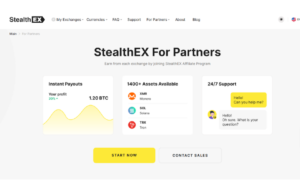AI-powered chatbots have revolutionized customer interactions across industries like travel, CPG, and telecommunications. However, many enterprises face the challenge of managing multiple chatbot use cases across different services, leading to a fragmented user experience. Jumping from one chatbot to another can be frustrating for users, diminishing the overall efficiency and satisfaction.
A real-world instance of this issue is observed in some e-commerce platforms where distinct chatbots handle separate functions. Users seeking assistance with both product information and order status may find themselves redirected between different chatbots, each limited to a specific function, leading to a disjointed experience.
This document outlines a policy framework to design and manage a cohesive AI chatbot strategy, applicable across industries.
The ROI Debate
One of the key challenges in adopting this strategy is addressing the ROI claims of individual use cases. Each use case often demonstrates measurable benefits, making it hard to deprioritize. However, a unified triage approach ensures these benefits are retained while delivering a seamless, enterprise-wide solution.
For example:
- A personalized recommendation bot might drive significant revenue, but integrating it with a broader intent-driven system can enhance its reach and effectiveness.
- Similarly, bots designed for customer support or booking management might show high efficiency when part of a unified system.
ROI vs. Use-Case Complexity analysis can be leveraged to determine priority.
Use Case ROI Potential Complexity |
||
| Property Search | 8 | 6 |
| Product Recommender | 8 | 7 |
| Bill Payment | 6 | 10 |
| Booking/Cancellation | 10 | 3 |
| Lost/Found Information | 3 | 4 |
The Complexity: Too Many Bots, Too Many Goals
1) Fragmentation: Multiple chatbot implementations for different use cases, leading to customer confusion and resource inefficiency.
2) Redundancy: Overlapping functionalities across chatbots resulting in duplicated efforts.
3) Scalability: Difficulty in scaling chatbot solutions across multiple geographies and business units.
4) Customer Experience: Lack of a unified interaction framework causing inconsistent user experiences.
Framework Principles
1) Unified Entry Point: Implement a single “triage bot” as the primary entry point for all user interactions.
- Role: Capture user intent, collect preliminary details, and route to the appropriate specialized chatbot API.
- Benefit: Provides a seamless user experience and minimizes customer confusion.
2) Intent-Based Routing: Use Natural Language Understanding (NLU) models to determine user intent and invoke the appropriate conversation AI API for specialized use cases.
- Example for a travel website: Routing intents such as “find a property,” “cancellation,” or “trip planning” to corresponding APIs.
3) Centralized Management: Maintain a centralized platform for chatbot governance, ensuring consistency in design, messaging, and data handling. 4. Reusable Components: Develop modular chatbot APIs with reusable functionalities (e.g., product-specific detail, FAQ handling, promotion-specific details).
4) Performance Metrics: Continuously monitor chatbot interactions with KPIs like accuracy of intent detection, resolution rates, and user satisfaction scores.
5) Data Privacy and Security: Ensure compliance with industry standards and regulations such as GDPR, CCPA, and PCI DSS for data handling.
Blueprint for Success: A Unified Triage Bot

Triage Bot:
- Single chatbot interface for all customer interactions.
- Invokes specific APIs after determining intent.
Specialized Chatbot APIs:
For a travel website example:
- Property Search / Availability API: Recommends properties based on user preferences.
- Trip Planner API: Assists with trip planning across dates, budgets, and itineraries.
- Booking Modification API: Handles booking changes and cancellations.
- Property Details API: Provides property-specific information.
- Credit Card Recommendation API: Suggests cards based on spending patterns and travel preferences.
Conclusion
Enterprises must embrace a unified chatbot framework to address the complexities of diverse use cases while maximizing ROI and delivering a seamless customer experience. By deploying a triage bot, leveraging modular APIs, and prioritizing intent clarity, organizations can build scalable, efficient systems that not only meet but exceed user expectations.
As AI continues to evolve, enterprises have the unique opportunity to innovate responsibly and effectively, turning challenges into opportunities and fragmented systems into cohesive, impactful solutions.



































